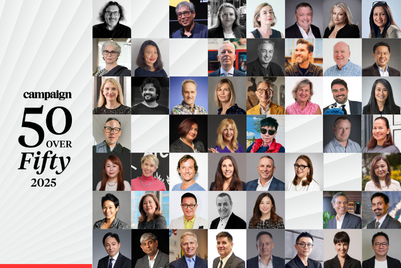
In a briefing with members of the media, Ashwin Puri, Facebook’s head of APAC publisher sales (Audience Network & LiveRail) said that the move was the next step in enabling publishers to better capture monetisation opportunities.
“Mobile ad spend in Asia Pacific is estimated to pass US$8.4 billion in 2016,” he added. “That’s 20 percent of all digital spend, and publishers are looking for ways to capitalise on this growth.”
In the last quarter of 2015, the company reached a US$1 billion annual run rate for advertising spend through the FAN. Facebook claims that the bulk of this is being passed to publishers, with the remainder being recorded as net revenue for the company.
In 2015, mobile ad revenue accounted for 78 percent of Facebook's total advertising revenue of US$4.3 billion and 74 percent of total revenue.
Mobile web debut
The company has been working with 10 publishers in closed beta to test out its mobile web expansion. In Asia the list includes Indonesia’s Kaskus and Vuclip, recently acquired by Hong Kong’s PCCW Media.

Industry commentators have long noted that a showdown between Facebook and Google for advertising dollars is an eventuality.
Today’s announcement of the company's venture into mobile web inventory puts it one step closer to directly challenging Google’s AdSense platform and its current dominance as a broker of publishers’ ad inventory.
The move exposes FAN to a new and larger group of publisher partners, not to mention a larger adspend pie.
According to eMarketer, the global mobile advertising market will hit two significant milestones in 2016, surpassing US$100 billion in spending and accounting for more than 50 percent of all digital ad expenditure for the first time.
When asked how this new offering fits in with Facebook’s other publisher offerings, such as Instant Articles, Puri said that it expands the venues via which publishers can choose to monetise their content.
 Ashwin Pury |
“With Instant Articles, publishers can offer a rich native experience within Facebook,” he added. “But where are users accessing content from? It’s a variety of channels which includes the mobile browser and we are helping publishers better monetise with all the ways people interact with their content.”
While it remains early days for the mobile web expansion, and no real data points to share at this time, Puri said that the company expects the number of publishers to come onboard “to be substantial”, especially in Asia.
Native ads leading success on mobile
Since its launch in late 2014, FAN has expanded its capabilities, introducing tools for native ads in May 2015 and continuing the push around the value proposition of “people-based targeting.”
According to statistics released by Facebook, apps that use FAN account for 6 percent of all time spent in mobile apps, with 80 percent of impressions on ad served belonging to native ads.
Puri shared that for the Asia-Pacific region, the last half of 2015 saw a 150 percent increase in the number of apps on FAN, with a 155 percent increase in apps that have adopted native ad formats. He was unable to disclose absolute figures for the growth.
Globally the platform lays claim to more than 2.5 million advertisers active on its network, while partner apps in the FAN include organisations such as Baidu, Cheetah Mobile, Holaverse and Sumally.
“With our people-based targeting approach, advertisers are able to maximise performance,” said Puri. “We’ve also made the user experience to deploy native ads seamless, all advertisers need to do is just check a box to extend their ads to FAN with native formats enabled. There is no need for new creatives to be inputted as the images are auto-translated.”
The company also claims that publishers seeing 7 times higher CPMs for native ads when compared to standard banners.




.jpg&h=334&w=500&q=100&v=20250320&c=1)
.jpg&h=334&w=500&q=100&v=20250320&c=1)
.jpg&h=334&w=500&q=100&v=20250320&c=1)
.jpg&h=334&w=500&q=100&v=20250320&c=1)



.jpg&h=334&w=500&q=100&v=20250320&c=1)


.jpg&h=268&w=401&q=100&v=20250320&c=1)


.jpg&h=268&w=401&q=100&v=20250320&c=1)
.png&h=268&w=401&q=100&v=20250320&c=1)
.jpg&h=268&w=401&q=100&v=20250320&c=1)
